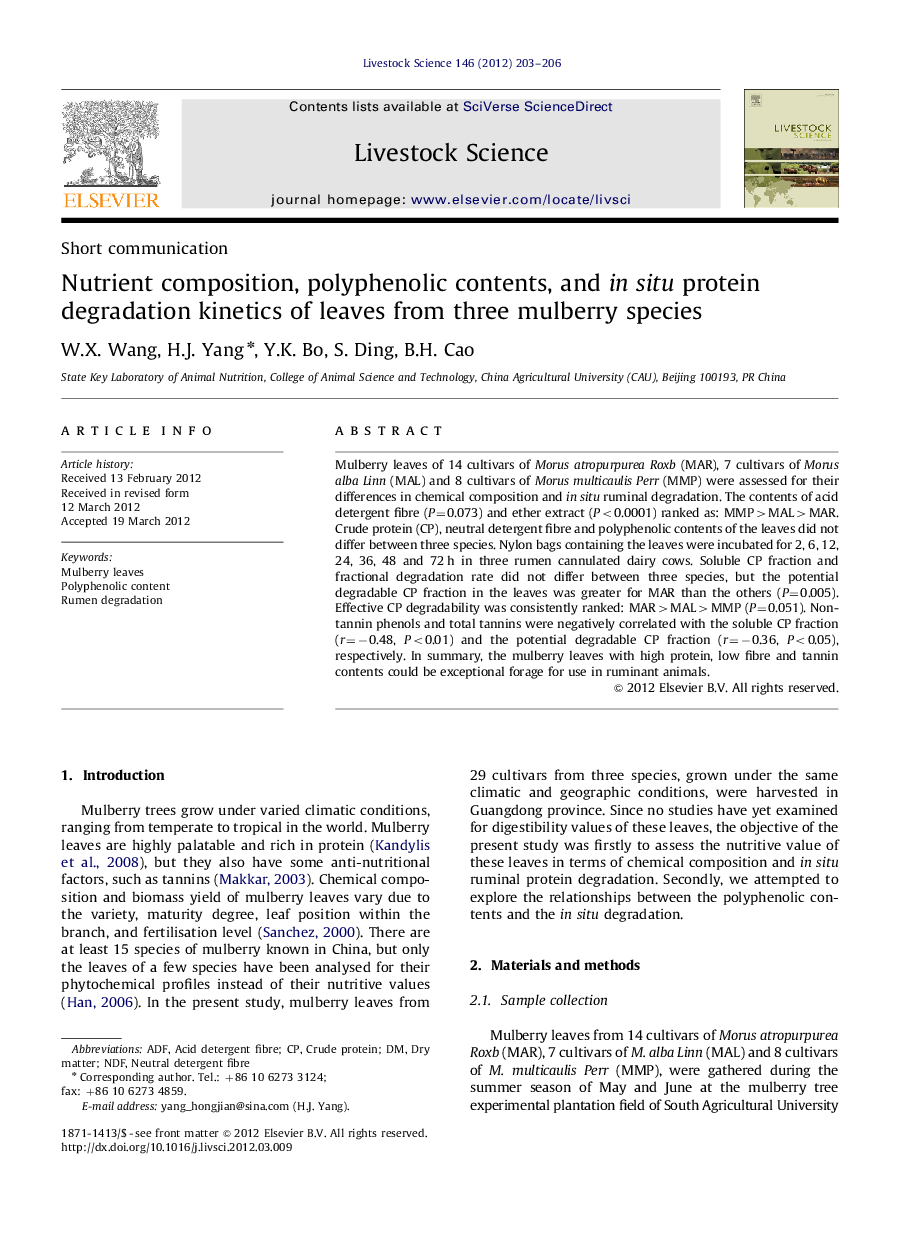| Article ID | Journal | Published Year | Pages | File Type |
|---|---|---|---|---|
| 5790830 | Livestock Science | 2012 | 4 Pages |
Abstract
Mulberry leaves of 14 cultivars of Morus atropurpurea Roxb (MAR), 7 cultivars of Morus alba Linn (MAL) and 8 cultivars of Morus multicaulis Perr (MMP) were assessed for their differences in chemical composition and in situ ruminal degradation. The contents of acid detergent fibre (P=0.073) and ether extract (P<0.0001) ranked as: MMP>MAL>MAR. Crude protein (CP), neutral detergent fibre and polyphenolic contents of the leaves did not differ between three species. Nylon bags containing the leaves were incubated for 2, 6, 12, 24, 36, 48 and 72Â h in three rumen cannulated dairy cows. Soluble CP fraction and fractional degradation rate did not differ between three species, but the potential degradable CP fraction in the leaves was greater for MAR than the others (P=0.005). Effective CP degradability was consistently ranked: MAR>MAL>MMP (P=0.051). Non-tannin phenols and total tannins were negatively correlated with the soluble CP fraction (r=â0.48, P<0.01) and the potential degradable CP fraction (r=â0.36, P<0.05), respectively. In summary, the mulberry leaves with high protein, low fibre and tannin contents could be exceptional forage for use in ruminant animals.
Keywords
Related Topics
Life Sciences
Agricultural and Biological Sciences
Animal Science and Zoology
Authors
W.X. Wang, H.J. Yang, Y.K. Bo, S. Ding, B.H. Cao,
